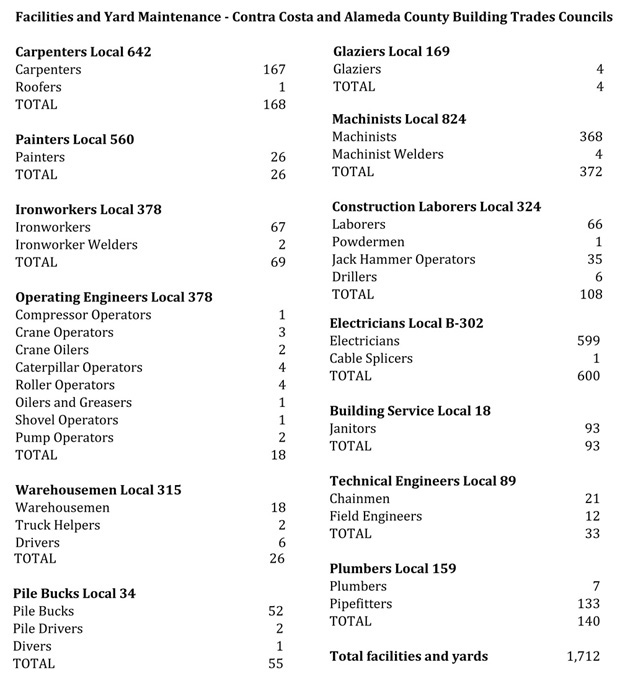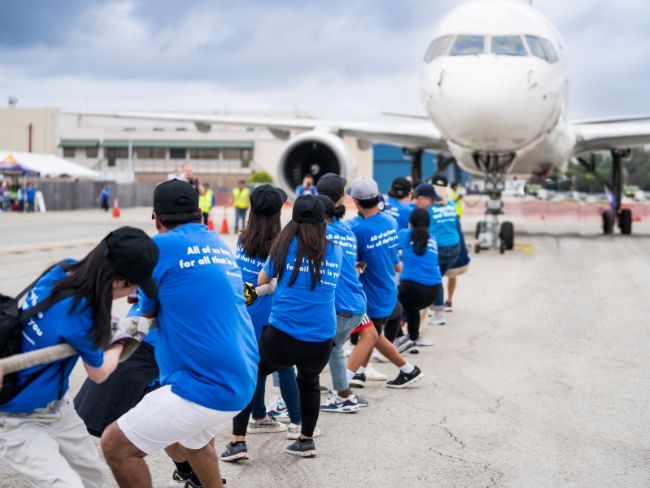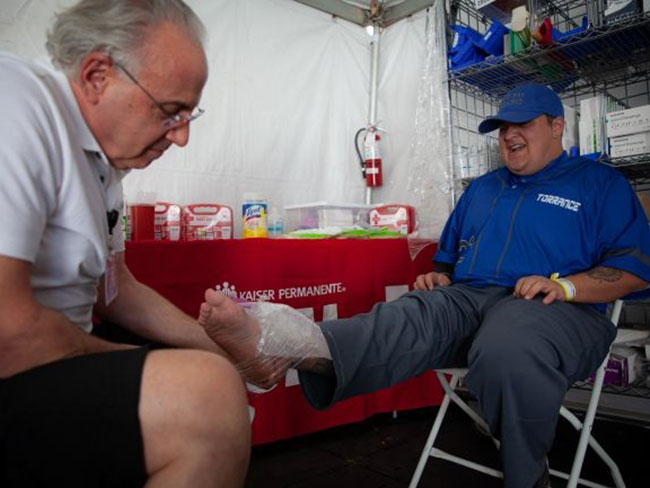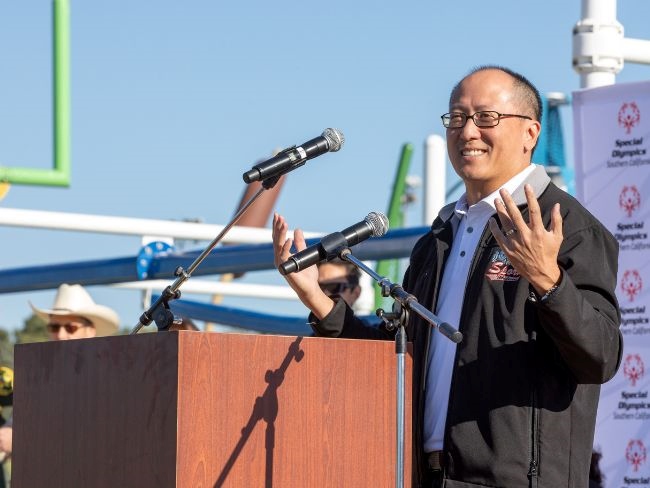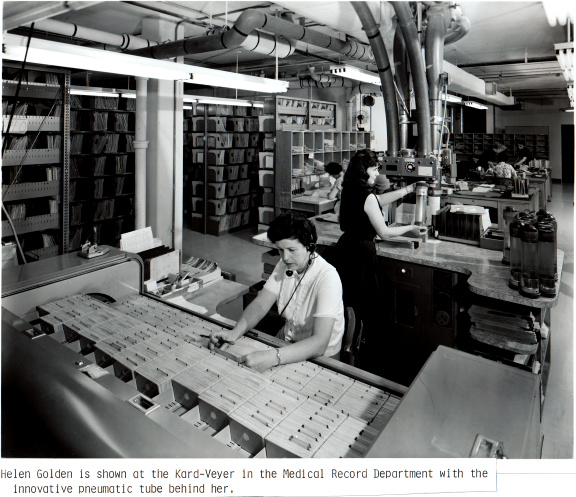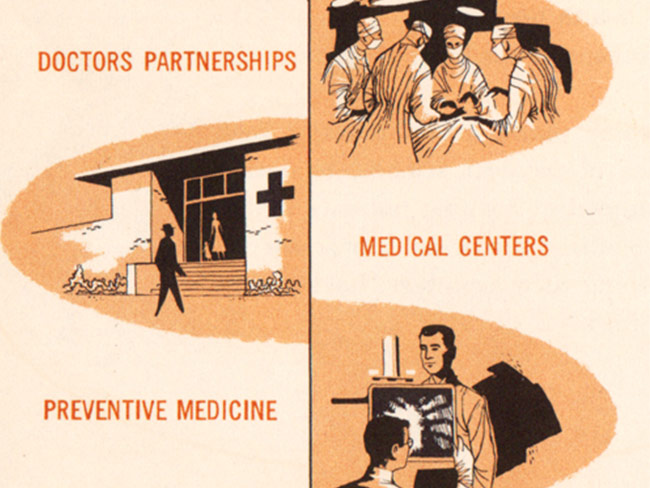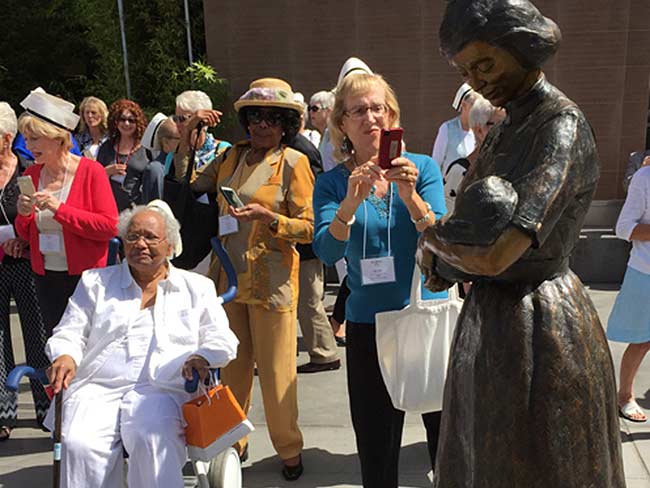The World War II Kaiser Richmond shipyard labor force
Page from "Manpower, Housing and Transportation Studies — Richmond Shipyards, Richmond, California” April 10, 1943

Page from “Manpower, Housing and Transportation Studies — Richmond Shipyards, Richmond, California” April 10, 1943
To build C-4's requires manpower - 133 miles of welding, 7,200 tons of steel, 831 tons of machinery, 232 tons of paint and cement, a sea-going hotel for 4,000 people, 100,000 feet of piping, 125 tons of sheet metal, 35,000 rivets
It’s well known that the World War II home front industrial work force accomplished remarkable feats, especially given that the traditional labor pool — healthy, young, white males — was off fighting the war. The 7 Kaiser shipyards were at the forefront of this new workforce building ships in new ways in new facilities. But what has been difficult to discover is exactly which occupations these workers were engaged in and which unions represented them.
Part of the task of an archivist is to review existing content in a collection and glean newly desired information from those resources. In one such survey of the Kaiser Permanente Heritage Resources archive I recently came across a handmade, unpublished report which had been previously overlooked, “Manpower, Housing and Transportation Studies — Richmond Shipyards, Richmond, California” dated April 10, 1943. Our copy was the originally the property of David A. Oppheim, an executive in Kaiser’s Aircraft Division in Oakland.
Among the remarkable data displays was a chart that listed every occupation under each of the 27 unions representing over 79,000 workers in the yards. All four of the Kaiser Richmond shipyards were fully operational by the date of this report, which was issued about the same time as the workforce peaked (women workers would peak again in mid-1944).
14 locals were under the Bay Cities Metal Trades Council of the Pacific Coast Metal Trades Council, and 13 under the Contra Costa and Alameda County Building Trades councils. The Boilermakers Local 513 was by far the largest trade, with more than 38,000 members. Some trades — such as shipwrights and blacksmiths — had only a few hundred; the smallest trade was the glaziers, with 4 members.

Though this data does not tell us how many of these occupations were held by women, we know the general contours. An excellent resource on this subject is Frederic L. Quivik’s Historic American Engineering Record report Number CA-326-M supporting the creation of the Rosie the Riveter World War II Home Front National Historical Park:
"In February 1943, women comprised 13.7% of all production workers at the Richmond shipyards, including 40.7% of all laborers, 37.1% of boilermakers, 19.4% of welders, and 18.8% of burners, 11.5% shipfitters, and only 4% of other production job categories. In addition, 48.2% of the office and clerical workers at the Richmond yards were women. Yard 2 had the highest percentage of women workers, both in production jobs (17.3%) and office and clerical jobs (62.1%). By June-August, 1944, women comprised over 27% of all laborers at the Richmond shipyards. They were 41.1% of welders and 33.4% of burners, while only 19.1% shipfitters and 17% of machinists were women. Peaks for the individual shipyards varied."
We also don’t know how many Boilermakers (full name: International Brotherhood of Boilermakers, Iron Ship Builders and Helpers of America) were hired under the shameful “Auxiliary Number A-36” created as a second-class entry for Black workers. Before the war started, workers in the Boilermakers were entirely white and male. Still, as the available workforce shifted and pressure mounted for the union to change their practices they “solved” the problem of Black workers in their ranks by creating a separate and unequal auxiliary.
This practice was much criticized and violated federal regulations prohibiting racial discrimination in the workplace. Black workers at Bechtel’s Marinship shipyard in nearby Sausalito resisted the Boilermakers' racist union membership policies; a lengthy court battle and intervention by President Roosevelt’s Fair Employment Practice Commission finally resulted in a favorable ruling in early 1944, which was upheld in January 1945 by the California Supreme Court. Unfortunately, by then the war, and shipyard production, was almost over.
The shipyards and any vestiges of Kaiser Industries are long gone, but Henry J. Kaiser’s legacy continues in the health plan he was so proud of. One of the smaller wartime shipyard unions is now the largest union in Kaiser Permanente’s Labor Management Partnership — the Building Service Employees International Union (the 93 janitors), which became the Service Employees International Union in 1968.

